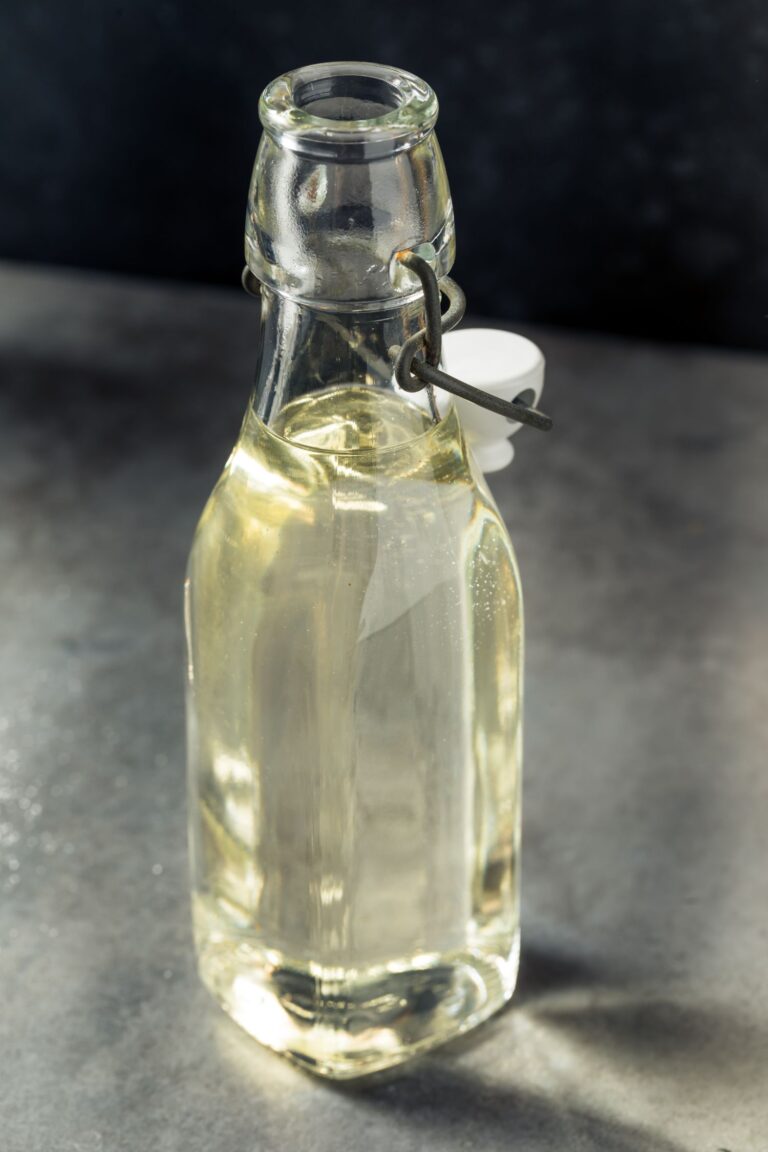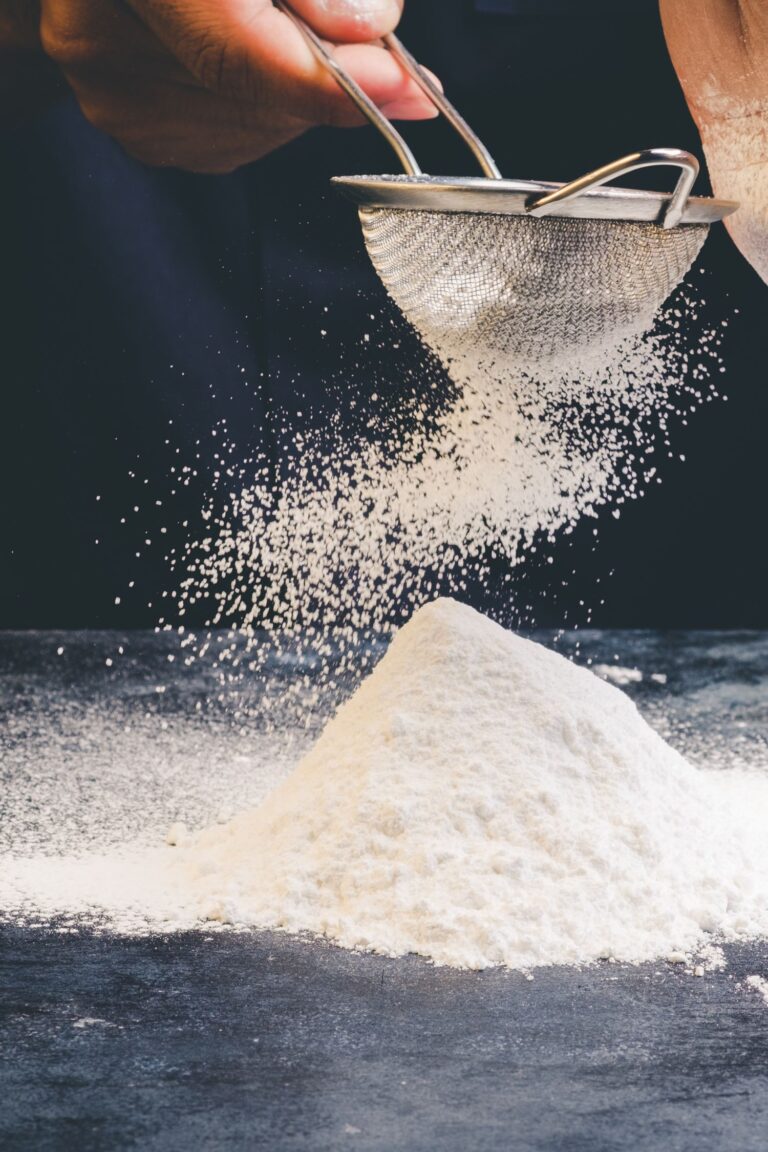How to Make Almond Flour at Home: A Versatile Gluten-Free Ingredient
Almond flour has become a staple ingredient in many health-conscious and gluten-free kitchens. This finely ground nut flour is not only a nutritious alternative to traditional wheat flour, but it also adds a delightful texture and flavor to a wide variety of baked goods, sauces, and even savory dishes. If you’re looking to incorporate more almond flour into your cooking and baking, you’ll be happy to know that it’s surprisingly easy to make at home. In this comprehensive guide, we’ll walk you through the simple steps to create your own homemade almond flour, as well as provide tips and tricks to ensure it turns out perfectly every time.
What is Almond Flour?
Almond flour, also known as ground almonds, is a flour-like powder made by finely grinding raw, blanched almonds. It’s a popular ingredient in gluten-free, low-carb, and paleo-friendly recipes due to its impressive nutritional profile. Compared to traditional wheat flour, almond flour is higher in healthy fats, protein, fiber, and essential vitamins and minerals, such as vitamin E, magnesium, and potassium.
Almond flour has a delicate, slightly sweet flavor that works beautifully in a variety of baked goods, from cakes and cookies to breads and crackers. It can also be used to thicken sauces, coat meats or vegetables, and add a nutritious boost to smoothies and other dishes.
Why Make Almond Flour at Home?
While almond flour is widely available for purchase, there are several advantages to making it yourself at home:
- Cost Savings: Homemade almond flour is significantly more affordable than buying pre-packaged almond flour from the store, especially if you purchase almonds in bulk.
- Customization: When you make almond flour at home, you have complete control over the texture and consistency, allowing you to tailor it to your specific needs and preferences.
- Freshness: Freshly ground almond flour retains more of its natural oils and nutrients compared to store-bought varieties that may have been sitting on the shelf for some time.
- Versatility: You can easily make almond flour from different types of almonds, such as raw, roasted, or even flavored almonds, to suit your culinary creations.
- Waste Reduction: By making almond flour at home, you can use up any leftover or slightly stale almonds that might otherwise go to waste.
Ingredients and Equipment Needed
To make almond flour at home, you’ll need just a few simple ingredients and tools:
Ingredients:
- Raw, unsalted almonds (whole, sliced, or slivered)
Equipment:
- High-powered blender or food processor
- Spatula
- Airtight storage container
Step-by-Step Guide to Making Almond Flour
Follow these easy steps to make your own homemade almond flour:
- Choose Your Almonds: Start with high-quality, raw, unsalted almonds. You can use whole, sliced, or slivered almonds, depending on your preference and what’s available. Avoid using roasted or salted almonds, as they may result in a different flavor and texture.
- Prepare the Almonds (Optional): If you’re using whole almonds, you may want to blanch them first to remove the skins. To do this, bring a pot of water to a boil, add the almonds, and let them sit for 1-2 minutes. Drain the almonds, then use your fingers to gently squeeze the skins off. Discard the skins and pat the almonds dry with a clean towel.
- Grind the Almonds: Place the almonds in a high-powered blender or food processor. Pulse the almonds a few times to break them down, then blend or process on high speed for 1-2 minutes, stopping to scrape down the sides as needed. The goal is to grind the almonds into a fine, flour-like consistency.
- Check the Texture: Periodically check the texture of the almond flour by stopping the blender or food processor and examining a small sample. You’re aiming for a fine, powdery texture, similar to all-purpose flour. If the flour is still too coarse, continue blending or processing until you achieve the desired consistency.
- Store the Almond Flour: Once the almond flour is the right texture, transfer it to an airtight storage container, such as a glass jar or resealable plastic bag. Be sure to label the container with the date and any relevant information, such as the type of almonds used.
- Use and Store Properly: Homemade almond flour can be stored at room temperature in a cool, dry place for up to 2-3 weeks. For longer-term storage, keep it in the refrigerator or freezer, where it will stay fresh for several months.
Tips for Successful Almond Flour Making
Here are some additional tips to help you make the best homemade almond flour:
- Use a High-Powered Blender or Food Processor: A high-quality blender or food processor is essential for achieving a fine, consistent texture. Avoid using a standard blender or mini chopper, as they may not have the power to grind the almonds into a true flour-like consistency.
- Work in Batches: If you’re making a large quantity of almond flour, work in smaller batches to ensure even and thorough grinding. Overloading the blender or food processor can result in uneven or coarse texture.
- Let the Blender or Food Processor Cool Down: If the motor starts to overheat during the grinding process, give it a break to cool down before continuing. This will help prevent the almond flour from becoming too oily or clumpy.
- Sift the Flour: After grinding the almonds, you can sift the almond flour through a fine-mesh sieve to remove any larger pieces or chunks. This will result in an even, consistent texture.
- Experiment with Different Almonds: While raw, unsalted almonds are the most common base for homemade almond flour, you can also try using other types of almonds, such as roasted, flavored, or even blanched almonds, to create unique variations.
- Store Properly: Proper storage is key to maintaining the freshness and quality of your homemade almond flour. Keep it in an airtight container in a cool, dry place, and consider refrigerating or freezing it for longer-term storage.
Recipes and Uses for Almond Flour
Now that you know how to make your own almond flour, let’s explore some of the many ways you can use this versatile ingredient:
Baking with Almond Flour
Almond flour is a popular ingredient in gluten-free and low-carb baking, as it can be used to replace all or part of the traditional wheat flour in recipes. Try using almond flour in:
- Cakes and cupcakes
- Cookies and biscuits
- Breads and muffins
- Pancakes and waffles
- Pie crusts and tarts
When substituting almond flour for wheat flour, you may need to adjust the recipe’s liquid or binding ingredients, as almond flour can be more absorbent and may require more eggs or other binders.
Thickening Sauces and Soups
Almond flour can be used as a thickening agent for sauces, gravies, and soups, adding a creamy, nutty flavor. Simply whisk a tablespoon or two of almond flour into the hot liquid until the desired consistency is achieved.
Coating and Breading
Almond flour makes an excellent gluten-free coating or breading for meats, fish, vegetables, and more. The nutty flavor and crisp texture it provides can elevate simple dishes into something truly special.
Adding Nutrition to Smoothies and Shakes
Incorporate a tablespoon or two of almond flour into your favorite smoothie or protein shake to boost the nutritional value and create a thicker, creamier texture.
Dusting Surfaces and Tools
Use almond flour to dust surfaces and tools when rolling out dough or shaping baked goods, preventing sticking without adding excess wheat flour.
Replacing Breadcrumbs
Almond flour can be used as a gluten-free alternative to breadcrumbs in recipes like meatballs, casseroles, and breaded dishes.
The possibilities for using homemade almond flour are endless! Start experimenting with it in your favorite recipes, and don’t be afraid to get creative.

Homemade Almond Flour
Equipment
- High-Speed Blender
Ingredients
- 1 ½ cups blanched slivered almonds
Instructions
- Place the almonds in a high-powered blender or food processor. Pulse a few times to break them down, then blend on high speed for 1-2 minutes. Stop periodically to scrape down the sides.
- Continue blending until the almonds reach a fine, flour-like texture. Be cautious not to over-process, as this can turn the almond flour into almond butter.
- Transfer the finished almond flour to an airtight storage container. Label it with the date and type of almonds used.
- Store at room temperature for up to 2-3 weeks, or refrigerate/freezer for several months for longer freshness.
Notes
Usage Suggestions
- Use in gluten-free baking (cookies, cakes, pancakes).
- Substitute for breadcrumbs in savory dishes.
- Add to smoothies for extra nutrition.
- Use as a thickener for sauces and gravies.
Frequently Asked Questions about Making Almond Flour
1. Can I use roasted almonds to make almond flour?
While you can technically use roasted almonds to make almond flour, it’s best to stick with raw, unsalted almonds for the finest texture and flavor. Roasted almonds may yield a different taste and could result in a coarser flour. If you prefer a nuttier flavor, consider lightly roasting the raw almonds before grinding them.
2. How long does homemade almond flour last?
Homemade almond flour can be stored at room temperature in a cool, dry place for up to 2-3 weeks. For longer shelf life, it’s advisable to refrigerate or freeze it, where it can remain fresh for several months. Always keep it in an airtight container to prevent moisture and contamination.
3. How can I tell if my almond flour has gone bad?
Signs that your almond flour has gone bad include a rancid smell, off-taste, or visible mold. If you notice any of these signs, it’s best to discard the almond flour. To prolong its freshness, store it properly in an airtight container.
4. Can I make almond flour using a regular blender?
While it’s possible to use a regular blender to make almond flour, a high-powered blender or food processor is recommended for achieving a fine, consistent texture. Regular blenders may struggle with the task and may not yield the desired results.
5. What can I do with leftover almond meal?
If your grinding process results in coarser almond meal instead of fine almond flour, don’t worry! You can use almond meal in various recipes such as muffins, pancakes, or as an ingredient in smoothies. It can also be added to granola or used as a topping for yogurt or oatmeal.
6. Can I substitute almond flour for all-purpose flour in any recipe?
Almond flour can be used as a substitute for all-purpose flour in many recipes, but it often requires adjustments to the liquid and binding ingredients. Since almond flour lacks gluten, you may need to add more eggs or other binders to achieve the right texture, especially in baked goods. Experimentation may be necessary to get the best results.
7. Is almond flour suitable for people with nut allergies?
Almond flour is made from almonds, so it is not suitable for individuals with nut allergies. If you’re looking for nut-free alternatives, consider using sunflower seed flour or oat flour as substitutes in your recipes.
8. Can I blend different types of nuts to create a mixed nut flour?
Yes! You can blend different types of nuts, such as cashews or hazelnuts, along with almonds to create a mixed nut flour. Just keep in mind that the flavor and texture will vary based on the types of nuts you use.
9. How do I use almond flour in baking?
When using almond flour in baking, it’s often best to substitute it for a portion of the wheat flour rather than replacing it entirely. A common ratio is 1/4 to 1/2 cup of almond flour for every cup of all-purpose flour. You may need to increase the number of eggs or other binding agents to help hold the structure of your baked goods.
10. Can I make flavored almond flour?
Absolutely! You can experiment with flavored almonds, such as those coated in spices or herbs, to create unique almond flours. Just keep in mind that these flavors will transfer into your baked goods, so choose flavors that complement your recipes.
Conclusion
Making your own almond flour at home is a simple and cost-effective way to incorporate this nutritious, versatile ingredient into your cooking and baking. By following the steps outlined in this guide, you can easily create a high-quality almond flour that will elevate your gluten-free and low-carb recipes to new heights. Whether you’re baking, thickening sauces, or adding a nutritious boost to your favorite dishes, homemade almond flour is a game-changer in the kitchen. So why not give it a try and experience the many benefits of this incredible nut flour for yourself?





